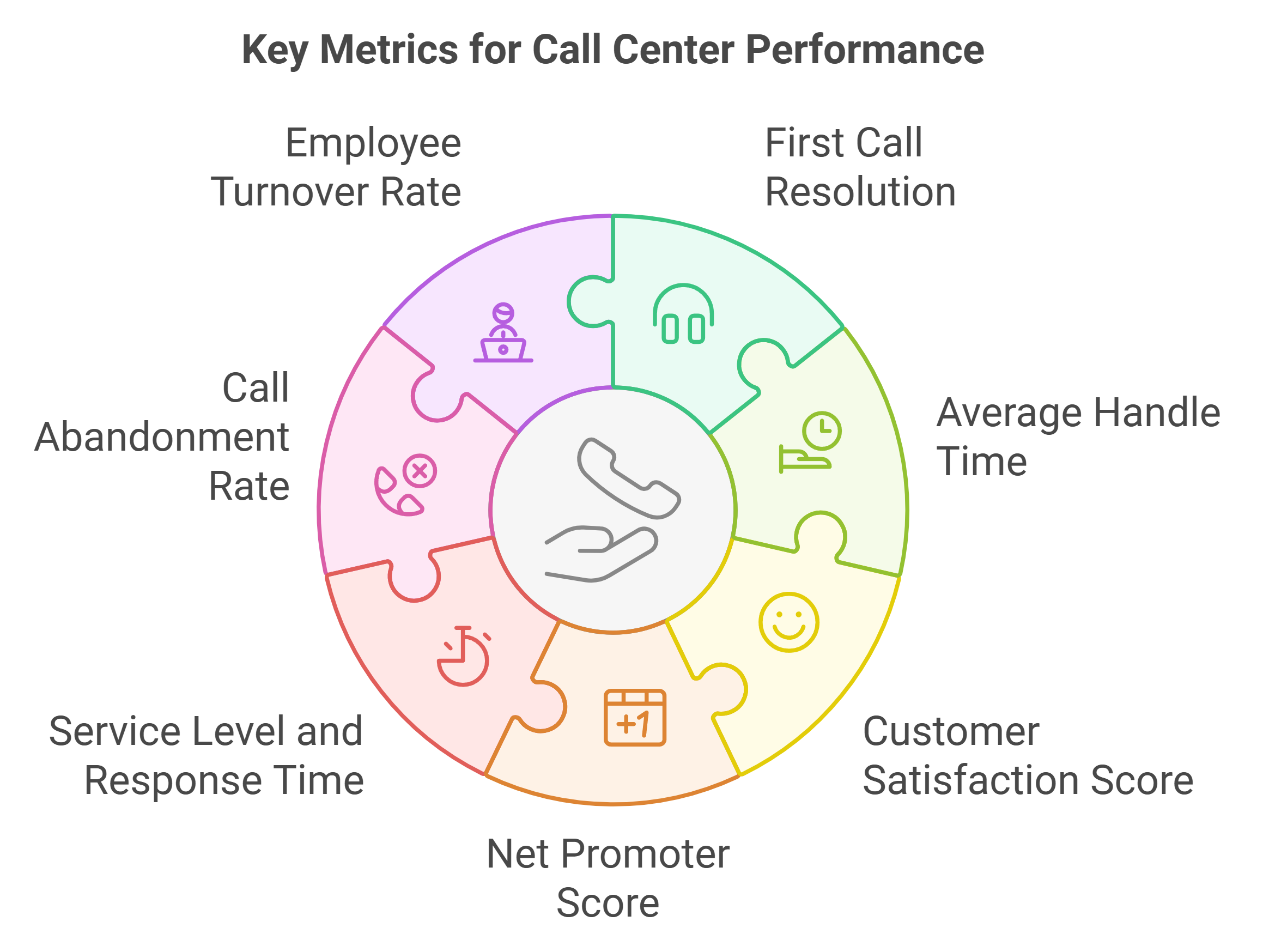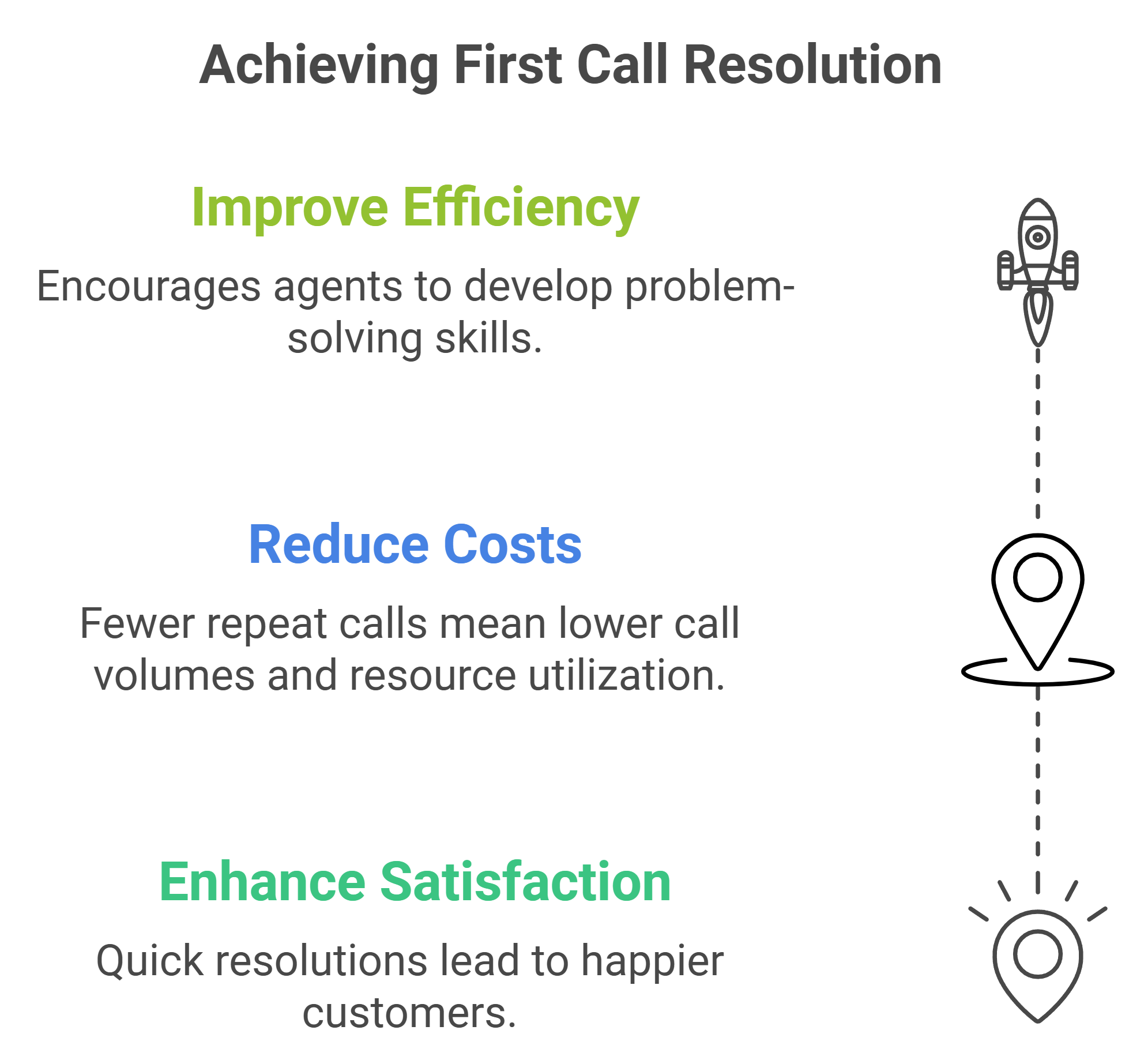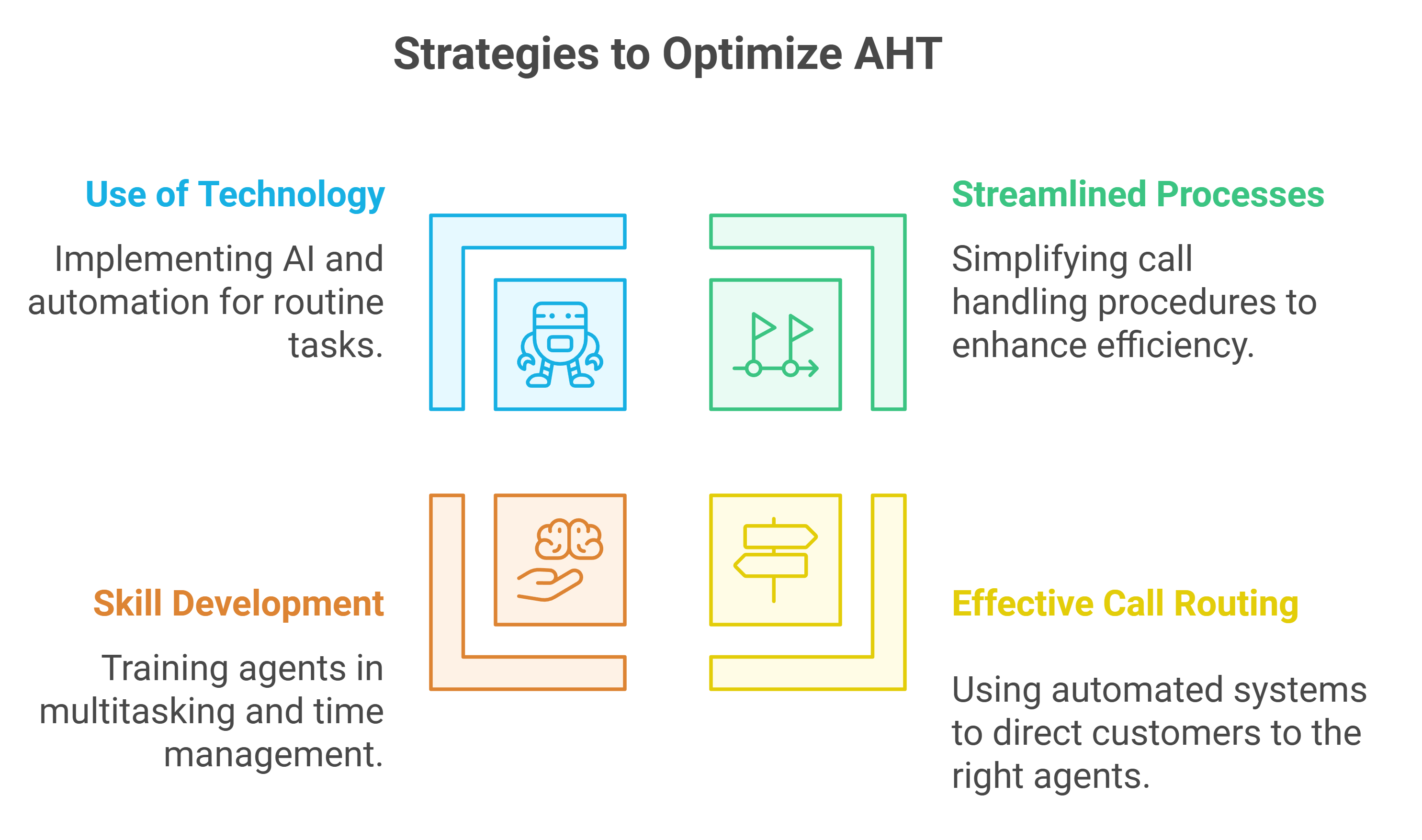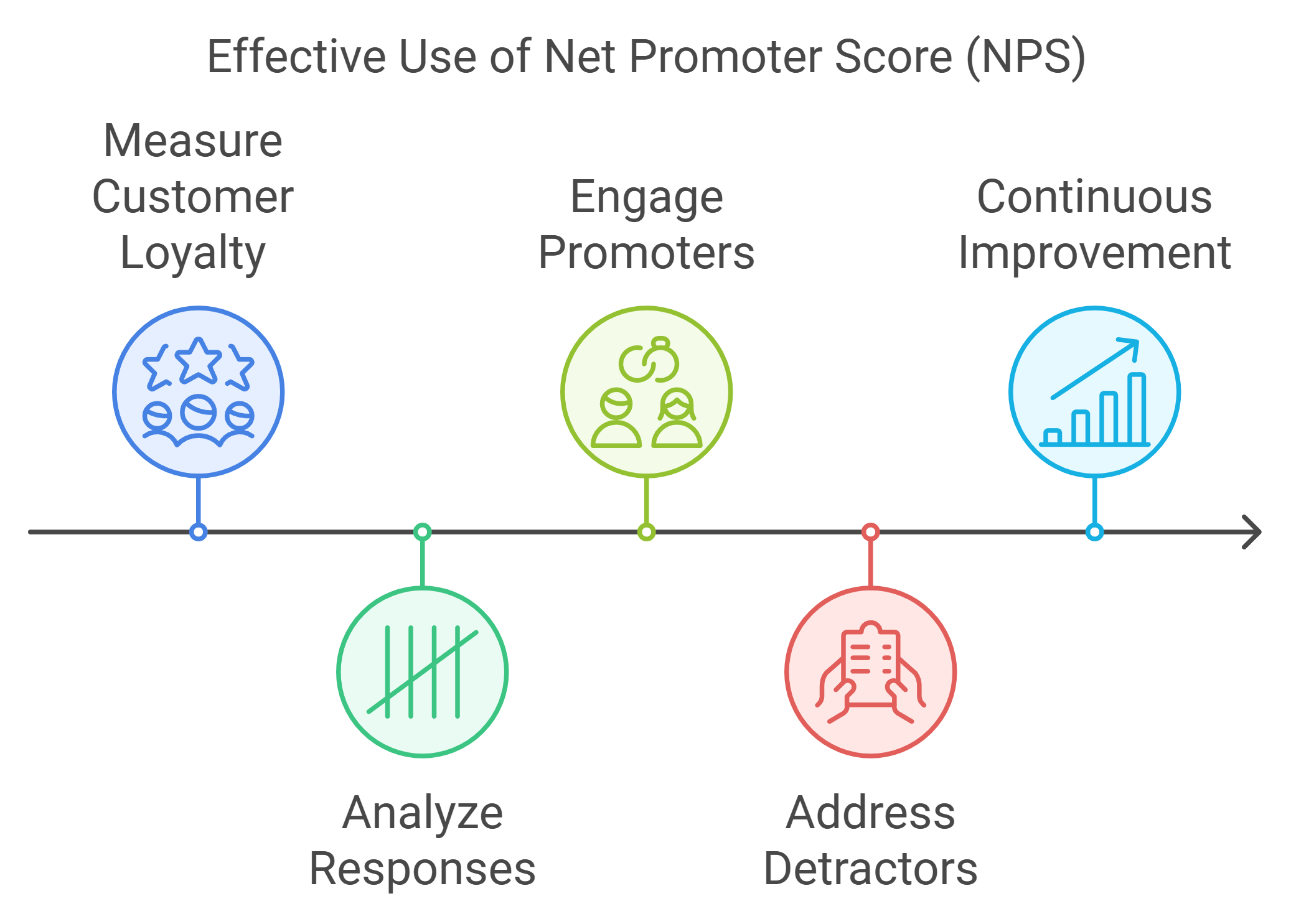Essential Call Center Metrics Every Business Should Track
In today's customer-centric business landscape, call centers play a pivotal role in shaping customer experiences and perceptions of your brand. For businesses aiming to deliver exceptional service, merely handling customer interactions isn't enough; it's crucial to measure and analyze performance continually. By tracking key call center metrics, businesses can make data-driven decisions that enhance efficiency, improve customer satisfaction, and drive growth. This article delves into the essential call center metrics every business should monitor and provides insights on how to leverage them for optimal performance.

Introduction
The Importance of Data-Driven Decision-Making
In an era where customer expectations are higher than ever, relying on intuition or outdated practices can put your business at a disadvantage. Data-driven decision-making empowers call center managers to identify areas of improvement, allocate resources effectively, and implement strategies that align with organizational goals. By analyzing specific metrics, you gain actionable insights that lead to:
- Enhanced Customer Satisfaction: Understanding customer needs and pain points.
- Operational Efficiency: Streamlining processes to reduce costs and increase productivity.
- Employee Performance: Identifying training needs and recognizing top performers.
Overview of Call Center Metrics
Call center metrics are quantitative measures that reflect various aspects of your call center's performance. They can be broadly categorized into:
- Customer-Focused Metrics: Indicators of customer satisfaction and experience.
- Operational Metrics: Measures of efficiency and effectiveness in handling calls.
- Employee Metrics: Insights into agent performance and engagement.
Tracking these metrics consistently allows for continuous improvement and alignment with business objectives.

Metric 1: First Call Resolution (FCR)
Definition and Significance
First Call Resolution (FCR) refers to the percentage of customer issues resolved during the first interaction without the need for follow-up calls or escalations. It's a critical metric because:
- Enhances Customer Satisfaction: Quick resolutions lead to happier customers.
- Reduces Operational Costs: Fewer repeat calls mean lower call volumes and resource utilization.
- Improves Agent Efficiency: Encourages agents to develop problem-solving skills.

Tips for Improvement
- Comprehensive Training: Equip agents with the knowledge and tools to handle a wide range of issues.
- Empowerment: Allow agents the authority to make decisions that resolve customer concerns promptly.
- Knowledge Base Access: Provide easy access to information and resources.
- Monitor and Feedback: Regularly review FCR rates and provide constructive feedback to agents.
Metric 2: Average Handle Time (AHT)
Balancing Efficiency and Customer Satisfaction
Average Handle Time (AHT) measures the average duration of a customer call, including hold time and after-call work. While shorter AHT can indicate efficiency, it's essential to balance speed with the quality of service:
- Efficiency vs. Effectiveness: Rushing calls may lead to unresolved issues and lower customer satisfaction.
- Personalized Service: Taking the time to understand and address customer needs fully.
Strategies to Optimize AHT
- Streamlined Processes: Simplify call handling procedures.
- Effective Call Routing: Use automated systems to direct customers to the appropriate agents.
- Skill Development: Train agents in multitasking and time management.
- Use of Technology: Implement AI and automation for routine tasks.

Metric 3: Customer Satisfaction Score (CSAT)
Methods for Measuring CSAT
Customer Satisfaction Score (CSAT) is a direct measure of how satisfied customers are with your service. Methods to gauge CSAT include:
- Post-Call Surveys: Automated surveys immediately after the call.
- Email Surveys: Follow-up emails requesting feedback.
- Net Easy Score: Assessing the ease of interaction from the customer's perspective.
Enhancing Customer Experiences
- Active Listening: Ensure agents fully understand customer needs.
- Personalization: Tailor interactions to individual customers.
- Resolving Issues Efficiently: Aim for first call resolution.
- Feedback Implementation: Act on customer feedback to improve services.

Metric 4: Net Promoter Score (NPS)
Gauging Customer Loyalty
Net Promoter Score (NPS) measures customer loyalty by asking how likely they are to recommend your company to others on a scale of 0 to 10. It's significant because:
- Predicts Business Growth: Higher NPS correlates with increased customer referrals.
- Identifies Brand Advocates and Detractors: Helps target engagement strategies.
Using NPS Feedback Effectively
- Analyze Responses: Understand reasons behind scores.
- Engage Promoters: Encourage satisfied customers to become brand ambassadors.
- Address Detractors: Reach out to dissatisfied customers to resolve issues.
- Continuous Improvement: Use insights to enhance products and services.

Metric 5: Service Level and Response Time
Importance of Timely Responses
Service Level refers to the percentage of calls answered within a specific timeframe, while Response Time measures how quickly calls are answered. Timely responses are crucial for:
- Customer Satisfaction: Reducing wait times enhances the customer experience.
- Operational Efficiency: Efficient call handling reduces queue lengths and call abandonment.
Setting Appropriate Benchmarks
- Industry Standards: Reference benchmarks common in your industry.
- Customer Expectations: Align with what your customers consider acceptable.
- Resource Allocation: Ensure sufficient staffing during peak times.
Metric 6: Call Abandonment Rate
Impact on Customer Satisfaction
Call Abandonment Rate is the percentage of callers who hang up before reaching an agent. High abandonment rates can indicate:
- Long Wait Times: Customers may become frustrated and hang up.
- Insufficient Staffing: Not enough agents to handle call volumes.
- Negative Customer Experience: Leading to dissatisfaction and potential loss of business.
Reducing Wait Times
- Optimize Scheduling: Align agent availability with peak call times.
- Implement Callback Options: Offer customers the choice to receive a callback instead of waiting.
- Improve IVR Systems: Streamline menus to reduce navigation time.
- Monitor Real-Time Metrics: Adjust resources dynamically as needed.
Metric 7: Employee Turnover Rate
Correlation with Service Quality
Employee Turnover Rate measures how frequently agents leave the call center. High turnover can lead to:
- Increased Training Costs: Constantly onboarding new agents.
- Inconsistent Service Quality: Experienced agents deliver better service.
- Low Morale: Affects remaining staff performance.
Retention Strategies
- Competitive Compensation: Offer salaries and benefits that attract and retain talent.
- Positive Work Environment: Foster a supportive and engaging culture.
- Career Development: Provide opportunities for advancement and skill development.
- Recognition Programs: Acknowledge and reward outstanding performance.

Implementing Analytics Tools
Technologies for Tracking and Analyzing Metrics
Utilizing advanced analytics tools enables comprehensive monitoring of call center performance:
- Customer Relationship Management (CRM) Systems: Centralize customer data and interactions.
- Workforce Management Software: Optimize staffing and scheduling.
- Real-Time Dashboards: Provide instant visibility into key metrics.
- AI and Machine Learning: Predict trends and automate routine tasks.
Benefits of Real-Time Monitoring
- Immediate Insights: Identify and address issues promptly.
- Proactive Management: Adjust strategies on-the-fly to improve outcomes.
- Enhanced Decision-Making: Data-driven approaches lead to better results.
Conclusion
Tracking and analyzing essential call center metrics is vital for delivering exceptional customer service and achieving business goals. By focusing on these key performance indicators, businesses can enhance customer satisfaction, improve operational efficiency, and foster a positive work environment for agents.
Ready to Optimize Your Call Center Performance?
At Bridge Business Support Services, we specialize in providing advanced call center solutions equipped with the latest analytics tools. Our expertise helps businesses monitor crucial metrics and implement strategies that drive success.
Contact us today to learn how we can assist you in setting up effective metric tracking and elevating your customer service operations.